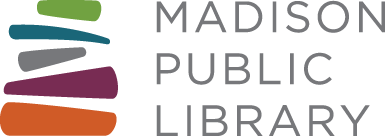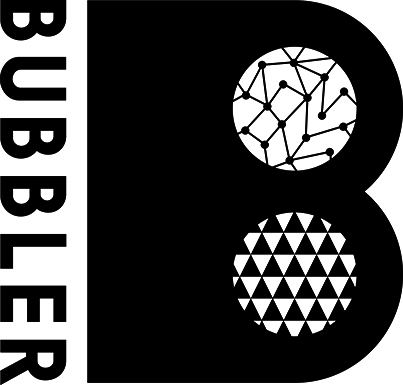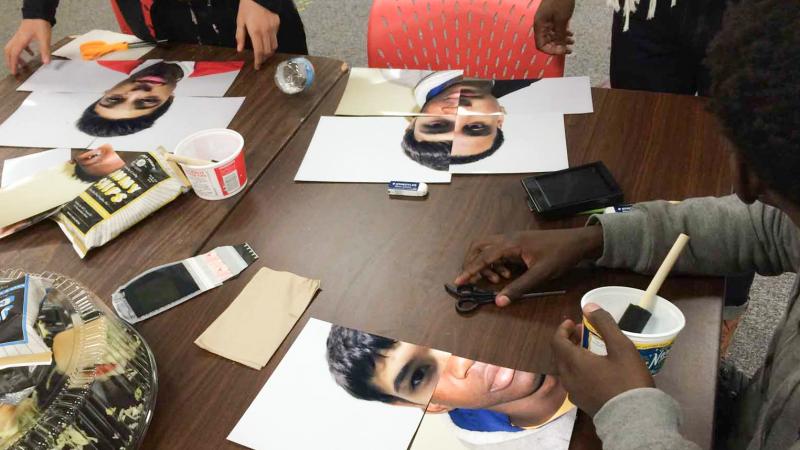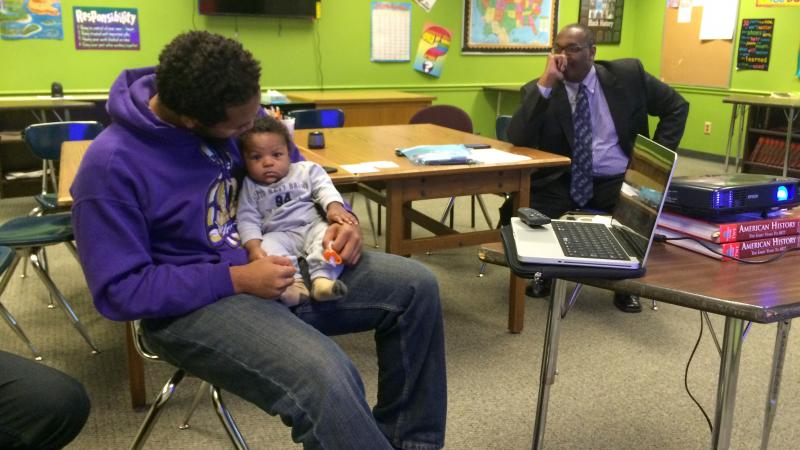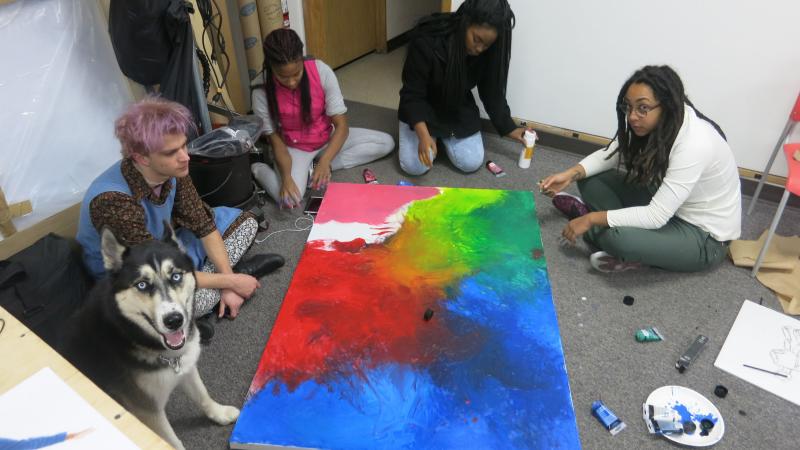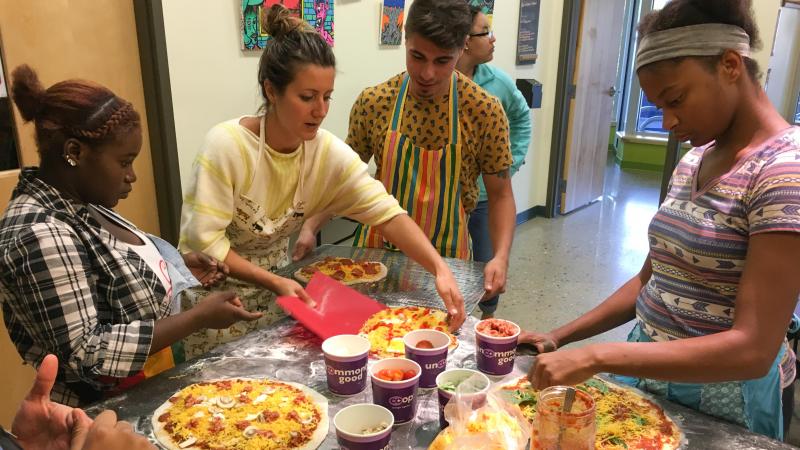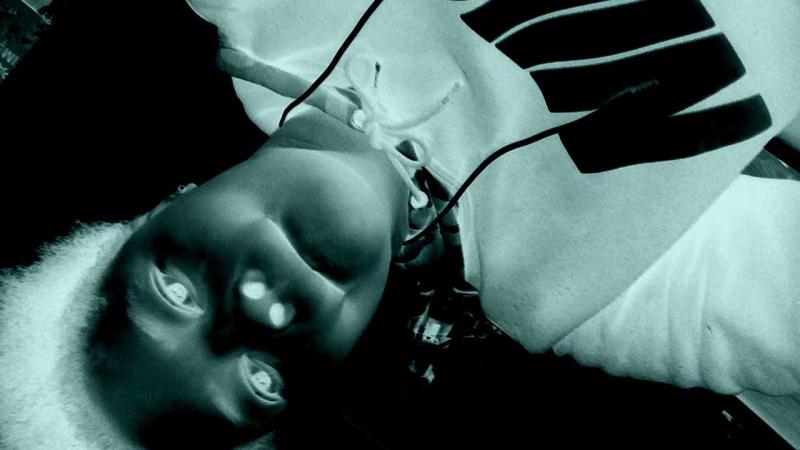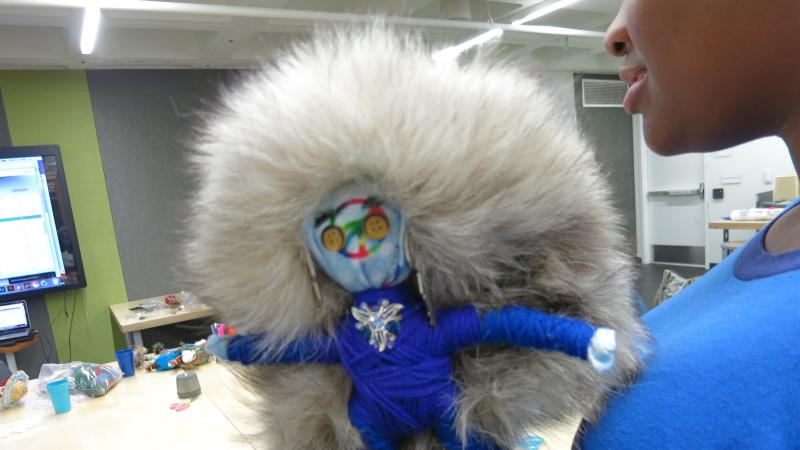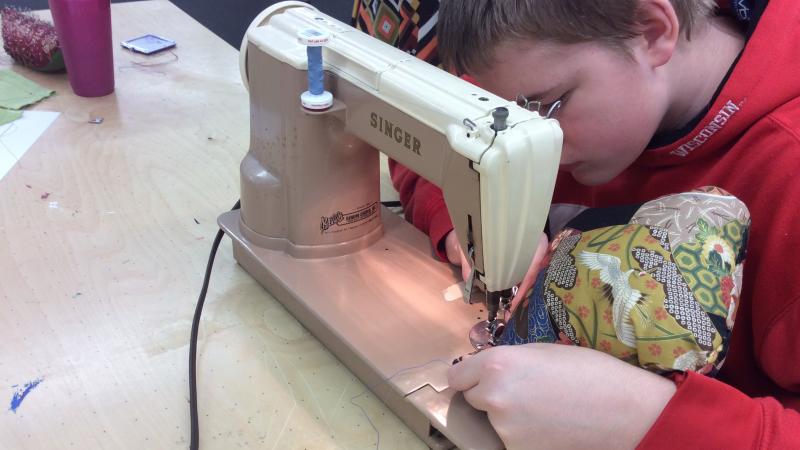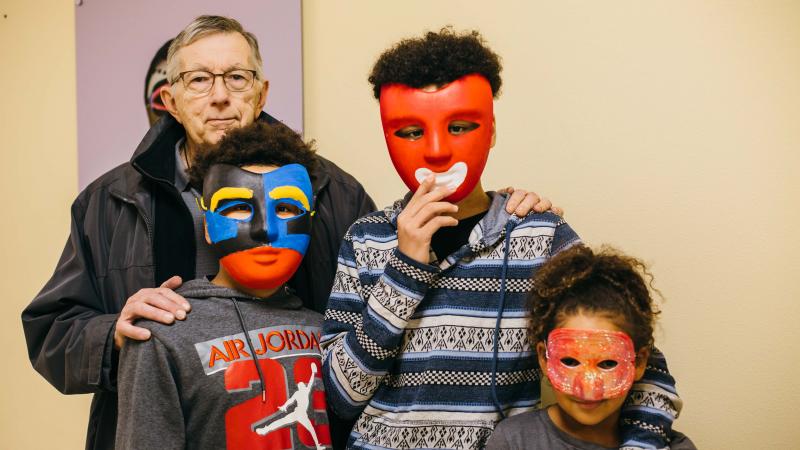How We Do It
We grow community by engaging in project-based learning that fosters relationship-building, self-expression, and skill development.
Making Justice sessions originally emphasized digital media, but our central focus quickly shifted to relationship building as our key technology. The physical place where we gather is also an important consideration, even though Making Justice is a maker program rather than a maker space. Sessions begin with a shared meal, an easy way to connect with far-reaching implications for community health. We collaboratively develop written, audio, visual, performance and life skills projects that minimize formal instruction, provide multiple points of access, and maximize creativity. We close by sharing and reflecting on our work to promote self-expression, community engagement, and program development, both within and beyond Making Justice sessions.
How we do it interweaves our voices as part of an ongoing dialog that sustains community building within and beyond Making Justice. Check out our Authors page to learn more about the contributors to this curated community article.
Relationship Building
Veronica: I think that Making Justice acts as a bridge to build in that relationship. It gives a safe space for the teens to work on building those relationships. We had a tough go when we first started, the kids felt like they were sitting there being judged and analyzed and scrutinized. Now the projects are a conduit to the relationship.
Nancy: Veronica at the Neighborhood Intervention Program (NIP) taught me that building relationships should be key to our process, and it transformed Making Justice. It’s more than just doing a project together. It’s about connecting with others through the process of making something together. For everyone involved, not just the teens.
Ben: The community members are really awesome for the teens. Just seeing other people come in and take an interest in them, what they like to do, how they like to be creative. It helps them get a sense of perspective.
Ed: The good thing about Making Justice is the community people. When people come to the detention center they often know these kids. And it's like, how did he know this kid? And that's our goal…we want to introduce them to resources they could utilize when they leave here.
Grant report: A diverse coalition of community and campus partners has been key to program impact. Addressing an opportunity gap in the original program design, they helped develop, facilitate and evaluate Making Justice on an ongoing rather than an occasional basis throughout the grant period.
Nancy: When Jesse and I first planned Making Justice, we met with predominantly white administrative staff at partnering juvenile justice and human services agencies and came up with this grand plan. Several weeks before the program was to start, we began looking for community members of color who would be interested in joining us as advisors and guest facilitators.
One of the first black women I approached said “Why are you coming to me now? We should have been at the table when this program was planned. This happens time after time after time in Madison. White people plan programs for the community but they don't come and talk to us. And when you do come to us, it's too late. You know we can't really have the same input we would have if you'd come to us at the very beginning.” I really took that to heart.
Grant report: Black NIP staff initially expressed discomfort with a curriculum focused on media art projects that failed to engage the teens.
Making Justice meeting notes, first semester: NIP staff are still hopeful that something will come of the program. But it isn’t grabbing the teen’s attention. Two teens have stopped coming, the learning style didn’t fit them. There’s too much time spent framing the projects like a school lecture; the teens are lost halfway into the presentation. NIP staff suggest that we begin the project immediately and provide additional information only as needed. And they emphasize that relationship building is key. The teens aren’t feeling a personal connection to session facilitators and UW students. They feel lab rat-ish, like they’re just being observed for a research project. Like this is just another place where they’re being set up for failure. And there are privacy issues, sharing is scary, no one is willing to share.
Nancy: So we decided to go back to square one, or at least to square two, after a less than auspicious beginning. To try and substantively engage communities of color in program planning and implementation. And we shifted our curriculum focus from media arts to relationship building.
We invited a broad spectrum of black and Latino community members to join an advisory council. Our first meeting at the central library was a total flop, only one person showed up. So then we started to build relationships on a smaller scale, meeting one-on-one or in small groups with community members in churches, community centers, farmers’ markets, or restaurants beyond the campus-capital corridor.
Grant report: Over 50 community and campus partners—a majority representing communities of color—helped develop, facilitate and evaluate Making Justice from 2014-16, more than seven times the number of projected partners.
Nancy: Eventually, black and Latino community members facilitated more than half of Making Justice sessions. We’d meet with facilitators to plan a session, and then ask for feedback after the teens had left. We also met twice each semester with staff from NIP and other partnering organizations, who actively engaged in Making Justice sessions with the teens. This staff also spent time with the teens before and after each session, so they had a sense of how it had all gone down. And then program coordinators would meet every two weeks to discuss how the sessions were going and how we could integrate feedback.
Emma: This is going to sound kind of sad, but since I left Madison, I miss Making Justice meetings…
Dana: …the meetings and the networking, and amazing community support…
Nancy: Carlos, how has community involvement evolved since we’ve left Madison? I understand that teens in semester-long programs can now have a say in who will be asked to facilitate Making Justice sessions?
Carlos: So I guess I was in kind of a unique position. I grew up in Madison, graduated from UW, and know a lot of artists with different skill sets. I ask the kids “What do you want to learn? Screen printing, or gardening, or …? I want to match them up with artists that look and talk like them, that have similar backgrounds. It’s like a soft approach to developing mentorship. If kids are into poetry we'll like go and invite my friend who's a black Muslim female scholar and she can teach this workshop. And these black girls will have someone that looks like them teaching them about things they care about. So that was just me bringing my network into it because I already knew these people.
Marta: Can I ask a quick question about community? So we're talking about the UW community and we're talking about a different community, which I assume is Madison. But the UW community I see as a problem as those students are not from here and they very quickly leave. How do you keep that impact localized if students go back to the east or west coast, or wherever? Like, they are obviously the UW community, but they're not a consistent part, and how do we make sure that they actually spread the impact of these great interactions with the kids?
Andre: They carry it on to their next community, if they move to New York or Chicago. And those experiences may help wherever they land, and whatever they do. Maybe they incorporate them into their next job, bringing in some kids that wouldn't have been brought in before, and exposing them differently. And so the community continues to grow. You carry community with you.
Jesse: Like Carlos is hoping to start a Making Justice in Columbia in 5 years.
Making Spaces
Jesse: We define Making Justice as a program rather than a maker space.
Nancy: But the library’s Bubbler room and Media Lab, and the UW Art Lofts studios have always been important spaces for the program. We also do field trips: a black barber shop, community radio station, VIP seating at Bryan Stevenson’s Just Mercy UW presentation.
Jesse: So on the point of location. Is it a good thing for the teens to have a home base? To meet at the Bubbler or Art Lofts each week, unless we’re going on a field trip? Or would it be better to meet at different places every week?
Alan: No, not somewhere different. Our kids like knowing things. Knowing where they're going, how long it's going to be.
Veronica: Yeah. And I think that the shift to the Bubbler room as our home base helped with our angst during the first year. Cause on our first go round, the program was all done at NIP. Moving it to the library, it worked. It actually made the programming better, it definitely shifted the program.
Marta: How so?
Veronica: Removing the kids from their comfort zone, shifting their focus into a very artsy looking Bubbler room. I think it just shifted them into a more creative mode.
Alan: I can also say about the venue, when the teens met at UW Art Lofts...I don't know if it was a place of privilege, but they definitely tried to present as if they were older and they belonged there. Right? When we'd be early, they'd be engaging with people walking through the Art Lofts. And it wasn't like, "Wassup?" They'd be like "Hey, how are you?" "Good, good." "So, what are you doing here?" It was way different.
And then, about three quarters of the way through the semester, one of the teens was like "Well, if the UW students are getting credit for this, why can't we?" And all of sudden I'm interested in education, right? You know, it might be minutiae, but I think it's something to build on. We didn't have teens running around the Art Lofts. They respected the place. They understood that "Hey, wait a minute. I really don't belong here. Maybe I should act like I belong here."
Food Justice
Veronica: Adding a meal to the beginning of every Making Justice session, where everybody sits down and eats together. I think that makes conversation very fluid, very organic. And it puts everybody in the same space.
Alan: Everyone is hungry, right?
Veronica: Sharing a meal is just a really great way to bring people together.
Britt: Food always works.
Making Justice Syllabus: We Are What We Eat. Guest facilitator: Matt Feifarak, Slow Food Madison. Prompt: What we eat affects not only our health and well-being, but also the environment, economy and society. Slow Food is an alternative to fast food, promoting environmentally sustainable agriculture, local suppliers, and traditional cuisines. Response: Create and share a slow/soul food meal
Teen: I liked the food and effort everyone put into it. I liked working with Matt, he taught me a new meal that I could make for my family. It was good, even though we didn’t have pizza. It was better.
Carlos: Instead of buying pizza, we have this rare opportunity where we can essentially inject $100 every week into these small people of color owned businesses by buying food from them.
At the beginning of a semester, we went around the room and asked everyone “Can you name one healthy meal?” And most of the kids said salad, and that's all they can think of. You know a lot of these teens are black kids who have never even had traditional black soul food. Which is unfortunately a reality of living in a small mostly white community like Madison. So my idea is that we're going to expose yall to these different cultures. And one of the best ways about learning about another culture is by sharing their food.
We'll start with something more familiar like tacos, or baked chicken from Peru. It's still recognizable. And then by the end of the semester we're heavy on curry and more outlandish foods. We’ve shared soul food, Korean, Chinese, Greek and Ethiopian food. We even brought the teens to a couple of restaurants. One time we brought them to an Ethiopian restaurant that was awesome because they took really good care of us.
Jesse: The Ethiopian restaurant is owned by one of the first black business owners in Madison and he got his start largely with the library, which helped him to find the resources he needed to do his business. He was really happy to give back.
Albert: Ed told me that Making Justice was goin' to cook with the kids at the detention center. And I'm like oh OK, that should be interestin' cause I cook with the kids. And so I was kind of excited to see what they were going to be bringing to the table. And you know Nancy just walked in sayin' you know this is your kitchen. Where can I set up at? Cause it's yours and we don't want to impose. And for me it's like, welcome, c'mon in, let's do this, let's see what you guys got.
I cook from the heart. I've never been to cooking school. My dad cooked in our family. I'm always open to new ideas, and I learned from you guys when you walked in. I was impressed by the instructions the kids were given as far as cooking, the hands on. The recipes were fabulous. It's almost become like we're a family. Because when you guys come on Thursday, the day that we cook, we always put food aside for you.
Grant report: Program highlights include a Cinco de Mayo themed meal created by teens at the Juvenile Detention Center, which was shared with juvenile court administrators, judges, prosecutors, and defenders.
John: The goodwill that's been established by the individual and larger food events at the JDC, it's more than I expected. Honestly. That is what I hear about, teaching kids to cook, and our outreach. Albert now has pretty much free reign to invite people here. Has done that with a couple of city alders.
Ed: One alder will request to come in, and sometimes knows a kid. They'll actually eat lunch together. And it's just good for kids to have people in those positions, that kind of look out for them.
Albert: We also had the police community outreach team come in, had lunch with the kids, and they served lunch. I've got kids that complain about certain cops. So with Ed and John's approval, I invited police up here to eat lunch with the kids that are venting about them. And you know you've got Officer So-and-So, and a lot of kids are like, you know we don't like Officer So-and-So. Well, let's sit down and talk about it, over lunch. Why not?
Nancy: Do you remember any feedback that you've gotten from judges or system workers about the detention center meals?
Ed: "When's the next one?"
John: "Do this more often!" "These are just like regular kids." Yeah, you should know that already. But thank you. Those events are such a warm, fuzzy kind of experience because they can talk with kids. They can see other colleagues that are at sort of a higher level, which is most folks we invited. And it's just been wonderful, really.
And we don't know what the opportunities are going to be. Most of these folks are pretty high up in the system. So they might really be able to provide some opportunities for an individual kid or for other groups of kids. It's fantastic.
Ed: People at other detention centers have called about Albert's cooking class, and talked about doing their own.
Nancy: Albert also helped launch a community center food pantry with Making Justice teens, making and serving soup and home-made bread to neighborhood families. Plus, he catered the opening of our teen exhibit Direct Message at the library, his BBQ sandwiches helped draw a crowd.
Building Sessions
Nancy: Everyone in the meeting space helps to build out a Making Justice session: teens, peer learners, guest facilitators, partner organization staff, plus occasional visitors and family members. Making Justice is about supporting community facilitators, helping them do what they do best.
Grant report: Sessions function as communities of practice engaged in a shared project and collective learning. In pre-program planning sessions, Making Justice coordinators and guest facilitators brainstorm maker projects; discuss community connections, teen learning styles and privacy considerations; and share teaching and learning tips.
Jesse: It’s really mind blowing to see someone who has never facilitated a teen workshop, and they’ll just rock it, and you’re like “you were born to run workshops!” And then you see someone who has only done adult workshops and they come into the teen program and just freeze. So we spend a lot of time getting facilitators ready for the sessions. And a big part of that is suggesting that they just come with and hang at a session, not as a presenter. To see what we do, and demystify the whole experience.
Britt: There were times when I wouldn't really know what to expect of a session. And the teens would be like “Why are we going? Who is this person?” And I'm like “I don't know. I think it's going to be really cool. We can work through this together.” I think that was valuable to the kids, because it was a kind of leveling ground where I became as vulnerable as the teens, and experienced it at their level.
Lalo: You need to establish that we’re all participating on the same level, and bring everyone into the activity. The teens and the undergrads, they have different perspectives, but we need to validate both. That notion of making justice as reacting to our sense of truth, our lived experience and how we're going to make sense of that.
Jesse: One guest facilitator focused on the teens—not the college students, not me, not the classroom teacher, not the supervising staff. The project was totally something that could have made the whole group cohesive. But she was just there to work with the teens. I actually had to stop her and say, “We’ll all answer too. I’d love to be able to tell you what I think.” And she was just kind of like “You know, you’re ruining my game.” But I’m watching this happening and it’s not working out. Nobody’s getting involved in the project. It’s something that I can forget too. Rob does it all the time, “I’ve only got 90 minutes and I just want to get these kids rocked out.” But you’re not creating that group concept if you don’t start out with five minutes including everybody, getting feedback.
Nancy: What about the ice breakers we use to connect everyone, like the name game?
Ben: I like the name game. Every week there can be a new group of kids, so they don't necessarily know anyone else. It can also tell you a lot about the teens, how they answer the questions, how willing they are at that moment to engage in something they might not necessarily want to do.
Carlos: I always use a talking stick. One of them is this hand-carved wooden armadillo that has been in my family for decades. So everyone gets to hold this art object that was created by hand, that they can connect with and feel good about. It's a tangible thing but it's also a way of setting up the space. I really do believe that children need structure to feel good. Even if they want to break the rules, they want to at least know what the rules are. So every time I do a workshop I set it up in the same way. I bring on my talking stick and I'm like, “Alright, who here knows what a talking stick is?” And usually one kid will be like “I do.” And then they tell me whoever has it gets to talk. So they're telling me what the rules are. And then if somebody breaks the rules it's easier to get them back in line because you can be like, “Oh, I thought you told me that it was so-and-so?” and then they're like “Oh, you're right.” So you're not putting yourself in a disciplinarian position, you're simply reminding them of the rules that they created. So that's a way of creating structure.
And then I have them go around the room and say their name, their age, and answer a warm up question. The reason why I have them say their age is because often there's a lot of adults in the room. And you can tell that adults get uncomfortable about age. So it's a way of leveling out the powers in the system. Everybody's got to say their age and you get put on the same plane. For the warm up questions I tend to avoid things like “how was your weekend?” or anything that might make them reflect negatively. I ask something that's creative, like “What's the first thing you want to do in summer vacation” or like if you could have any slice of pie, any superpower, any tattoo, what would you choose? Things that get their minds going and pulls them out of that dark place instead of having to reflect on something negative.
Jesse: I'm always interested in the role music plays, when we listen to music during the session. Do you guys have anything to say about that?
Carlos: I place an emphasis on creating a comfortable environment for students on top of a learning experience. There’s a lot of relaxing and release of tensions that goes on during our sessions. And these kids don’t have that a lot of the time.
Ben: For the kids, music is their life, well practically. It can be a big barrier if they can't listen to music. Obviously the content of the music can be problematic. But broadcasting instrumental rap or music, without the lyrics, helps the kids focus and relax.
Nancy: The teens often request specific rap artists, and whenever possible, I’d accommodate them with non-explicit versions of the music, which they’d help me find. I created an audio library on a laptop and brought a Bluetooth speaker. It was actually a good way to connect with the teens. I learned something about rap, and they were introduced to some of my favorite artists, like Miles Davis and Jimmy Hendrix, who they’d never heard of.
Britt: I think the program can be an engaging distraction for the teens. And that doesn't sound very strong. But they're coming in with a boatload of baggage, and may be in crisis for one reason or another. Just having a moment to be in a different setting, a place that’s neutral. And to do something that's totally different than what they would do in their free time or school time. It provides a distraction from some of the icky stuff that's going on in their lives. And just a brief pause might be a reset for some kids, to be able to hit pause and kind of escape some of the hideous things that they’re experiencing.
That reset can create community. Because they might have been having issues in the car on the way here, they may have consequences for calling each other names or hitting each other. But they come in here, and now we have a task at hand and we're going to engage in this process. And they might be disgruntled or pissed about it, but it's an engaging distraction they might need at that particular moment. Or I might need. It might help me, as their teacher for the rest of the day. It might give them the opportunity to see somebody else in a different light. And they make something that they're really proud of and because of that self-esteem, they're more willing to engage elsewhere.
Jesse: We had one teen in the program who set the tone for everybody. Every time we got together, he was just like, “I'm doing whatever that is.” He was excited. So then everybody else, no matter what they were thinking, if Matt’s in, I'm in. Like we had the theater session, we're all hoping to do improv, and eight white people were just standing there. And then Matt’s like, “I'll be the lion.”
It’s really interesting to have teens come back to Making Justice, who’ve been in the program before. When one group found out a teen had been there before, it changed our group. It really did. They were just like, oh my god, this dude, like he's older, he's done this before. He's super smooth. He's a really smart dude, he's articulate. He knows right away what we're doing, what the end goal is. He’s a mentor, before he’s even 18.
Projects
Rob: I feel that Making Justice has excelled because it’s project based. It’s not “let’s have you write down the alphabet” and you already don’t like writing it down. It’s “well here, let’s write a rap on the alphabet and rap ‘em by each letter.” And then they retain a lot more. So I’m definitely pro-project based learning.
Grant report: Formal instruction is minimized, although it is critical that facilitators clearly explain and contextualize projects to address the experiences of teen participants.
Lalo: At first, being a teacher, I over planned the projects. I was trying to figure out that sweet spot between how much information to give and how much time to actually work on the project. So the first time I ended up doing a lecture for 30 minutes out of a 90 minute workshop, and the kids were bored. We were building video games, and I thought they needed to have game theory, and this and that. So then I switched over and gave them five minutes of talk before they started the project. Then after a while I came back in to teach them one more thing. It's like what Rob was saying, just give them what do they need in the moment to be able to do the project, so that it doesn't take away from the process.
Rob: Here are the three words that you need to know for right now. Now get this done. And then once they get it done, it's OK to move on to the next step, like learning how to mix. So this is what these three buttons are for. By the end of a project, they’ll have the whole story.
Grant report: The most successful sessions feature collaborative projects with multiple points of access that can accommodate a variety of interests, skills and learning styles.
Making Justice Syllabus: Putting It All Together. Guest Facilitator: Rain Wilson. Prompt: How can we collaboratively build on our truths/lived experience to achieve social justice? Response: Create a collaborative collage that reflects our “The Truth Is” statements and dreams for a just future.
Teen: I started this poem the last time we was here at group for “The Truth Is.” Because when I went to school the other day, they was talkin’ about Baltimore, how it’s a riot. And then this girl is just like “I agree with them doing that because look how black people are acting.” And I got angry. So I wrote this poem It’s a Struggle to be Black.
Rain: These teens have had to rise above so much in their truth. And so I started thinking about things that rise above, and in a literal way it’s like a bird that has this freedom to fly. And so the frame for the collage Struggle Free was this bird.
Dana: There were a lot of access points to the collage. ‘Cause if the teens didn’t want to work with the images, they could look for words, or they could help glue the pieces of the bird together, or use the blow dryer. That worked really well.
Nancy: I remember one teen who’d been through hell, and found it very difficult to connect with our projects or the group. No matter how hard we tried to include her, she’d go off in a corner with an iPad, which we brought to every session, and turn her back on us. Sometimes she’d take pictures with the iPad, but then she’d delete them. She also deliberately screwed up the security settings on the iPad, locking it so no one else could use it, and then told me what she’d done, to see how I’d react. Well, I thought, at least she’s finding an alternative way to engage. But one day I found these amazing images on her iPad after the teens had gone, which she’d left for me to see. She’d been documenting the session, creating these stunning, original images of herself and the other teens. She finally found a way to access the experience, in her own way.
John: Honestly, I thought it would be purely multimedia projects. That’s where we started, right? Kids would be able to work on iPads and that sort of thing. And it’s gone in so many more directions, which is fantastic. One of my bigger surprises is just how willing the kids are to try different things. One that really surprised me is, some tough guys that were in the detention center, when they were making the fabric dolls.
Nancy: The intention figures. I must say when Kay told me she wanted to do that project, my first response was, “You want them to do what? Are you crazy?”
Ed: If you look on the surface they’re making dolls. It’s a whole lot more than that, the problem solving that they work through in the project.
Making Justice Syllabus: Intention Figures. Guest Facilitator: Kay DeWaide. Prompt: Who is there for you when you need someone? What attributes draw you to him/her? Response: create an intention figure with the desired attributes buried within.
Britt: I adore Kay to pieces. But when we first started doing the intention figures, I was like, “Oh right, she’s gonna get them to internalize and come up with this word that’s so profound, and relates to somebody in their lives. And then they’re going to make these dolls. Right. I totally went skeptical, like this is totally going to flop. And it’s been one of the most successful programs. Time and time again. And I continue to doubt it, I don’t know why, like this is not going to apply. And it does every damn time. I’ve got my collection of 8-10 intention figures in my classroom, and the teens are drawn to them, they’ll check them out and ask questions.
Technologies
Nancy: I’ve always been curious about how we got permission to go beyond using pencil and paper at the Juvenile Detention Center, which was the only technology my students could use when we first visited here in 2012. Today, Making Justice brings a ton of electronics into the detention center—iPads, cameras, audio recording gear—as well as other supplies and equipment. I recently visited teens at Philadelphia’s detention center, and pencil and paper are still the only allowable program equipment.
Ed: It was mind-blowing when I first came here, the rule that the kids could only use pencils. But the message I got from Dane County was that we are looking to improve. There’s a difference between policy and rules. D.O.C. 346 is our policy, which says you have to have six hours of educational and programming, and three meals a day. Rules are what we come up with internally to accomplish that. The problem is that sometimes you have a rule that you don’t know why it existed. The pencil rule was not a D.O.C. mandate. It was a rule that some staff member made became he became convinced that hey, it’s unsafe to use markers. And what happens is facilities take that and they stick with it, not knowing that you can change a rule. It takes a while to get people to come off of that kind of stuff. I’m going to quote Albert on this, who says “It’s not about what’s in your facility, it’s your supervision. Because a kid can take a pencil and do damage with it if he’s not supervised.” Right? So we have to change our mentality on why do we have this rule? What purpose does it serve? It took us a while to condition ourselves to look at it that way. And it’s not easy, you know. I mean every time Jesse has a new idea, we have to say, wait. Is this gonna’ be OK?
Jesse: Everybody has a different opinion. Some say safety, and all that stuff, so that’s why we’re always trying to be cautious about it.
Ed: When people get resistant, they throw the safety card. It’s “I don’t know if this is right or if it’s going to work. But you know what? By gosh, it may not be safe.” And when you say safety, people from the highest level of government freeze. Right? Because that word, a big word of liability comes out. And so to combat that you have to invite people here to see things. You know what I’m sayin? You have to convince people what we’re doing is right and this is how it looks. So with us it’s just conditioning ourselves constantly that this is a rule that we’ve made up for whatever reason and we can change that rule. And we should change that rule, because the ultimate philosophy of the facility, of the department, of the state, is to get better and to be less institutionalized and to have more diverse programming.
John: There was some resistance early on, prior to Ed, because of safety reasons. But safety hasn’t been an issue with the Making Justice program. Now, it has enough history and goodwill that we’re doing this for the right reasons, it’s the right thing to do, kids are learning so many things from this. There is an acknowledgement that things could happen. But unless we’re negligent and let kids start juggling knives or something, I think we could withstand an incident. Not that I want one to happen, but given how we’ve approached this, and really evaluated all sort of new activities that might be a little bit out of the norm, I think that’s not a problem.
Britt: For the shelter teens there were similar concerns about iPads and other electronic equipment. But we just always make sure that the kids are aware of the rules ahead of time. In the car ride to the library, I’ll say OK let's go over the ground rules again. We're using this technology for a specific purpose. Anything other than what the instructor or the community member is giving you directions on is not cool. And you know I try not to come down on them too hard, but I do want them to know that it's not okay to be wandering. There are times when they totally do, they're going to all the time. Even if I'm watching like a hawk, they still can outsmart any of us.
Right now we're taking risks with tools that could potentially be dangerous but I don't know that we've really come across anything that was like a no go. Like when we had Bird Ross as a facilitator and we knew we were going to be sewing. We were like, “ummm…you know there could be needles and sharp seam rippers and stuff, and any of those things could be dangerous.”
Ben: I think we did say no to sewing at the detention center.
Britt: We were just really careful about counting materials before and after, higher supervision. And it was wildly successful and continues to be. I now keep a huge bin full of scrap fabric and we just continue to sew.
Nancy: How does relationship building work when there are electronic media projects, like video game design, or stop-motion animation? When the kids are focused on individual computer monitors?
Jesse: Sharing digital media…that’s what they do, man! They share media constantly. “Look at what I’m doing!” They’re creating the media for each other, it’s not a private device.
Lalo: We framed the video game session as testing of each other’s games. The kids were always like “Look at what I got so far!” They were goofing around with each other, talking about the games, and giving each other a hard time. But it was in a productive way, like “you need to add more enemies to that game.”
Jesse: Once when I was doing animation stations, the teens came up with a plan that they were going to visit each station as a group and watch what the others were doing. Two of the kids had super noticeable learning disabilities. So two of us adults sat with them and actually did their animations, based on what they wanted to do. They were a hit with the others who came to watch. The kids we were helping were so excited when their peers told them how awesome their videos and stories were, it was just great to see them light up. And probably these are the same peers that are making fun of them at different times. But they’re like “How did you do that?”
Nancy: Do you teach kids to use professional software?
Rob: We’re moving away from learning software first. It’s much more accelerated, more direct hands on. I’m doin’ the rappin’, I’m pushing the button on me rappin’. I’m recording me rappin’, I’m mixin’ my boys. Oh well, that’s everything I could have learned in a 12-week software class. But it seems so much cooler when I was just doin’ it on my own. So that’s the idea.
Grant report: UW students observed that their Making Justice experience pushed them beyond technological as well as cultural comfort zones, and deepened their understanding of literacy. “Technology-use is not one of my strengths,” wrote one student, “working with the NIP teens, I've indubitably gained a certain set of skills and a greater sense of confidence surrounding media that I did not have before.” Other comments included “Learned more about my own lack of cultural literacy,” “This class really opened my eyes to different literacies! Especially Hip Hop.”
Sharing
Carlos: At the end of the workshops, I have everyone take the talking stick and you go around the room and say one thing you liked or learned about today. And that way they can reflect a little bit. And then the workshops have a clear beginning and a clear end. I've done my fair share of research on rituals. What I'm doing is incorporating these elements where things have a defined beginning and a defined end. That way you're not walking out of the room feeling weird.
Ben: While the kids are working the projects they can interact with each other and get to know each other better. You know in a less structured activity. Because they don't necessarily want someone standing over them and saying “What are you guys talking about now? That's not about independent living skills, so we're moving on. Stop talking about that now.”
Participant project release: Your child(ren) or ward will be completing a creative project(s) as part of a Madison Public Library program. He/she automatically owns the copyright to this creative work, which gives you the right to decide how this work is copied and shared with others. Madison Public Library wants to recognize this copyright and ask your permission for the Madison Public Library and others to share this work as follows:
Cheryl: Braniya is over the moon excited that her poem will be on display at the library! She is also excited to have her name listed publicly.
End of session protocol: Fill in Session Log on Google Drive, especially Observations/Notes. This is really important! Spend time talking to staff and students to write this. Talk about what went well, what didn’t, and any recommendations for next time. Be specific.
Teen comments from session log: “I thought the library was supposed to be a quiet place.” “I want to create things when I grow up.” “I liked when the other kids picked my design to print because it makes me think that when I start my own company that other people are going to be wearing my designs all over Madison.” “It’s impossible to say bubbles in an angry way.” “I got this, my dad does drywall!” “That’s cold! That’s mine. I’m wearing that tomorrow.” “This one is for my mom, she fightin’ some bad habits.” “I never thought I was an actor, I mean I acted but not in front of an audience.” “I can just come here and work on this stuff? I never knew.” “I can stay here for another 2 hours. I definitely don’t want to go home” “I enjoyed getting a few things off my chest.” “Wait. You spend 100 dollars a week on food? For us? Dang.” “My family and friends all call me Pookie. Teachers and others call me D-. You can call me Pookie” (to Making Justice staff). “Hey i was wondering what food we go have next time and thank u all for tonight yall be lighting up my day all of yall is speacial” (teen texting from staff member’s phone on the way home from workshop).
Britt: There's always opportunities for us to digest and discuss and roll with what we've gathered from Making Justice after the fact. It's just a conversation in the car on the way back. After a sound recording session, the teens will be like, “I want to play my song, can we play it at lunch?” And I’ll bring out my little Bluetooth speaker and play it for the other staff and kids. They’ll say “make sure you email that to me” or if it’s animation or other technology, they’ll want to know how they can access it. And the teens will say, “I'm so jacked that they have that media studio at the library, and I can record my own stuff. I’m totally going back to the library to talk to Rob.”
Rob: Give these kids a chance to buy into “I can utilize this technology to make this kind of statement about homelessness.” That’s making justice.
Britt: I email the teens’ home school team, and say things like “Joe made this project today and it was really cool. He went in with this really lousy attitude, he had a really rough morning, but totally turned around and he made this beautiful creation that he's so proud of. And you should ask him about it.” Or “I just learned today that this student really wants to go into audio recording production. I never knew that before and maybe that's something the student could look into as an elective if you have something to offer there.” I try to shoot off an email for at least a couple of the kids each week, with each session.
Audio recording transcript protocol: This protocol is intended to facilitate transcription of digitized audio recordings created in conjunction with Making Justice, enhancing access to a unique community archive.
Grant report: A community news session with Madison’s Young, Gifted & Black (YGB) Coalition began with informal conversation over a shared meal to foster relationship-building. Teen and UW student participants developed interview questions, contributed personal stories, created audio recordings or took photographs for a story that will be posted to the Teen Bubbler website. YGB spokesperson Brandi Grayson shared her childhood experiences—including sexual abuse, early motherhood and drug use—encouraging the teens to overcome trauma, recognize their talents and control their own destinies: “I want you guys to take this away from this conversation. You are great, you are frickin’ amazing…you are powerful beyond belief…and the fact that you are sitting here is because you haven’t believed in your own magnificence.” The teens shared their dreams for the future, and YGB members shared the names of community contacts who could help them realize their dreams. Teen responses to the session included “what [Brandi] had to say was definitely important, especially when she ended up talking about ways for us to bring ourselves up after we’ve been broken down,” “I ain’t been talked to like this before - I like to hear something like that,” and “You’ve changed my life.”
Protocol for processing new content: Processing image and audio content created in Making Justice will require use of the project Dropbox and the Content spreadsheet on Google Drive. The end result will be that a) each file has been assigned a unique number and b) the Dropbox folders are organized.
Nancy: For our first exhibit Direct Message, it took a few weeks for the teens to understand what we meant by the exhibit. It didn't get real until we went to the library and were standing in the space and said “What if we put your artwork here and here and here?” The teens decided to include larger-than-life size self-portraits on the library’s front façade and personal statements that could be accessed via QR codes. They also projected a video of their silhouettes from the second story windows, which made it look like there was a live performance going on. Teens walking outside would come into the library to look for the performers.
Direct Message
Thas it, right there
That goin’ be the name, direct message right there
Box that one, that’s the name
Hashtag
Who like Direct Message? Raise yo hand!
How you goin’ say it?
Black lives matter
Cuz look, we got a message and its gonna be direct
We sendin’ a message to show how people can come together and work on a project and get it done.
There we go, yeah!
It’s a direct message to society of the misconception that they have on us young black minorities
Carlos: We were working with this group of kids and we told them “Hey you're gonna have an exhibition, and there's goin to be a big party.” And one of the girls was just like nah, we're not doing this, it's all pretend. And then it got a couple of weeks before the show and she started realizing “Oh, this is actually happening.” And then it got to the day of the exhibition Too Much Sauce and all of a sudden she sees like a hundred people and they're there for these kids and this girl who had been like kind of a tough cookie all semester gave me a hug. She was just like awwww… and I think it's just the fact that I did what I said I was going to do. A lot of the time kids are used to that not being the case.
Teen comments from session log: “There is a lot of people here.” “You don’t have to tell anyone that this is all your art, you can just enjoy the party if you want.” “Nah, this is my art.”
Andre: The exhibits are great, it's very concrete, something at the end that wraps up and shows and recognizes. And we pass this back up the food chain, it gets to the county exec's office, “Look what our kids are doing!” Our kids aren't always thought about as producing things and putting things out there. I think for the teens, they can see something that they accomplished, and they're recognized. And also for a lot of the parents, who I had an opportunity to talk to. This was a proud moment for them. I think sometimes we don't understand how much recognition can mean to kids and their families, there's not a lot of spaces where they are. And so I really like that model of producing something in the end that recognizes their work over time.
Veronica: I let them know, you're getting something out of this too, and that there was an expectation. I drove that in, we're going to have an exhibit, come hell or high water, it's happening. Get on with it. It helped them focus, and then just seeing it all come together at the end, seeing the pride in them. And all of our parents showed up for the exhibit, which very seldom ever happens. Everybody came out. I had one mom, she was almost in tears, she was just so proud, and she brought family with her, just to see what her daughter had been working on. We had several who brought families with them. Just to come out and see how proud they were of what their kids had created, that was huge.
Ed: I like to see the kids tell their own story. It's their right, it's their story.

